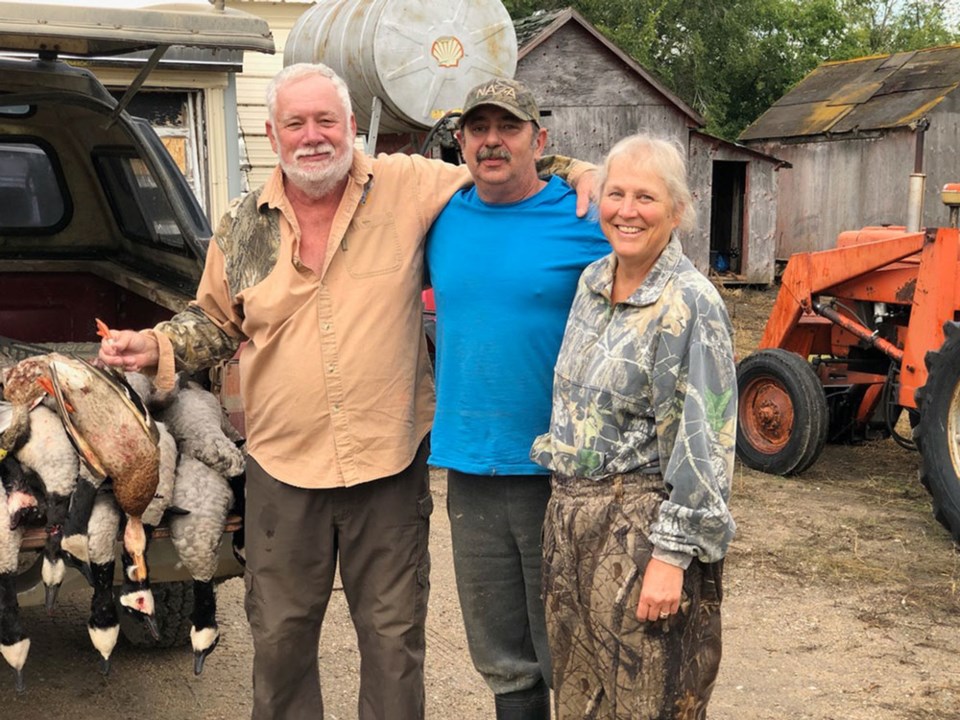KIPLING - Hunting is in his blood.
Hunting guide Dan Demyen of Kipling has been operating Double D Outfitters for almost 30 years.
“My very first client from Charlotte, 小蓝视频 Carolina suggested I should start up my own outfitter’s business, so that’s what I did in my early 20s.”
Demyen has had some clients coming to hunt for the past 28 of 29 years.
When some of the original hunters felt they were too old to make the trip, their sons began taking their place to carry on the tradition of making the yearly trip to Saskatchewan for the hunting season.
American hunters come from Alabama, Arkansas, Michigan, Illinois and Wisconsin to hunt waterfowl, mainly ducks and geese.
Tim and Lori Lickly from Michigan, two of Demyen’s oldest clients, were unable to make the trip this year but state they are coming next year for sure. This couple is always Demyen’s first hunters of each season making, the annual trip for the Sept. 1 hunt.
Usually four hunters make the trip at a time with some staying for three days and others stay for the whole week adventure, excluding 2020 when no one was able to make the trip across the border during COVID.
Demyen provides the full experience including the lodging, meals and the hunting stories from days gone by.
“They seem to enjoy themselves,” says Demyen, “and I guess that’s why they keep coming back.”
“They’ve become friends now.”
“We kill a lot of birds while they’re here, up to 300 birds a week, although not this year during the drought, it was only about 100.”
“I usually start bringing up hunters on September 1st and finish up on October 31st as between these dates are the real good hunts.”
Going into November and December, the weather is unpredictable.
On an average year, Demyen will bring in eight to 10 groups of hunters, although only three groups made the trip this year.
They say they kill more birds here in one week than they do during a whole season at home and have more fun with Demyen, who lines everything up for them ahead of time, scouting for good hunting areas.
Some plan their hunting trip as their guys’ getaway.
Most plan this trip as their vacation or as a family getaway for father and son or brothers.
Groups start their mornings as early as 3 a.m., hunt at the break of daylight, head back in to clean the birds, have breakfast, have a nap and are back out for an early evening hunt.
When Demyen isn’t looking after the American hunters, he’s joined by his son Mitch getting birds, deer, moose, fox or trapping coyotes.
In 2020 he and his son Mitch caught close to 300 coyotes, averaging over $100 per coyote hide.
“My son Mitch enjoys hunting just as much as I do.”
“He’s just a hunting fool like me,” Demyen says with a smirk.
He also traps year-round at the Feedlot near Peebles just to keep the predators down.
When he’s not hunting, he’s processing the animals.
Demyen’s father was a government trapper so he learned early on all about hunting, starting as early as age five.
“When I was seven or eight I skinned 2,600 muskrats for dad,” explains Demyen.
“It was just in my blood then already.”
“My dad always swore I was born with a knife in my hand,” laughs Dan.
“My dad would trap 100 coyotes a year, 60 to 70 beavers, a couple thousand muskrats, and everything else that was out there.”
This article has been updated to correct the byline.




